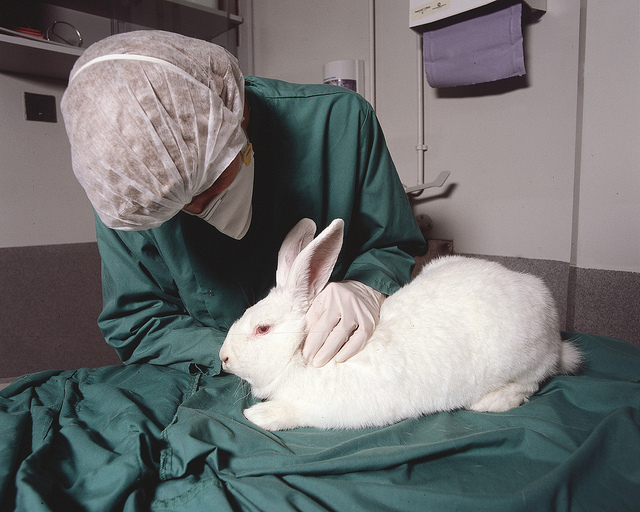Should we test on animals for commercial and medical advancements?
In the United States, various animals are often tested on and used to develop medical treatments, determine the toxicity of medications, check the safety of products that are ultimately destined for human use. There is a large debate regarding the ethicality of the matter; opponents believe that the use of animals for scientific and commercial testing is cruel, abusive, and inhumane, while proponents believe that this method has permitted scientists to develop life-saving medications and treatments and that there is no alternative to animal testing and experimentation. I am a strong opponent to this method as I believe that this type of testing is savage and inhumane as animals are often subject to force feeding, forced inhalation, food and water deprivation, prolonged periods of physical restraint, infliction of burns and wounds, and infliction of various chemical treatments without the effects of such chemicals being known.
Another downside to animal testing is that such tests or experiments have the potential to mislead researchers into ignoring potential cures and treatments. In other words, a treatment or cure that isn’t successful on animals may be successful on or valuable to humans. For example, the over-the-counter drug Aspirin has proved to be dangerous for some species but a cure to fever and a pain reducer for most humans. Vitamin C has also shown to be effective in treating sepsis in humans, yet makes no substantial difference in the case of mice. According to a report published on Slate.com, a “source of human suffering may be the dozens of promising drugs that get shelved when they cause problems in animals that may not be relevant for humans.”
Often times, cures or medicines tested successfully on animals fail on humans. Lindsay Marshall, PhD, Science Communications Officer at the Humane Society of the United States and Humane Society International (HSUS/HSI), stated that “more than 90 percent of drugs that have passed animal trials for safety and efficacy are not successful in treating the human disease for which they are intended.” Additionally, Kathy Archibald, Founder and Director of the Safer Medicines Trust, stated in her chapter “Of Mice but Not Men,” in the 2016 book What Doctors Don’t Tell You stated that, “Just as many drugs fail in clinical trials because they turn out to cause side-effects in humans, many others turn out to be ineffective in humans, despite performing well in animals.” Overall animals act as poor test subjects for products that are implied for human usage; the anatomic, metabolic, and cellular differences between humans and animals are far too substantial to be ignored. Paul Furlong, Professor of Clinical Neuroimaging at Aston University (UK), states that “it’s very hard to create an animal model that even equates closely to what we’re trying to achieve in the human.”
Proponents believe that all animals being tested on are covered by the Animal Welfare Act; an act that was signed into law in 1966 that regulates the treatment of animals in research, exhibition, transport, and by the dealers. Yet this act has some hidden truths to it. In fact, 95% of animals used in experiments are not protected or covered by the Animal Welfare Act. The AWA does not cover rats, mice, fish, and birds – which make up about 95% of the animals that are tested on. This equates to about 25 million out of the 26 million animals that are annually tested on without coverage. What good does that do? Without being protected by the act, animals are left completely vulnerable to abusive testing conditions and experiments. In addition, the AWA only regulates the housing and transportation of animals – not the experiments themselves. The US Congress Conference Committee protects researchers through the act by exempting them from following regulations during experimentation.
And while proponents believe there is no alternative to animal testing, there is. Researchers have begun investing more in vitro (in glass) testing in which they test on human cells within a petri dish. This method is proving to render more relevant and valid results compared to animal testing. Human volunteers can also be used in the case of microdosing, where a miniscule dose (too small to cause an adverse reaction) of a product is injected into the body and the effects are studied by analyzing blood. Another alternative method is the testing topical skin treatments onto artificially created human skin – such as Epiderm or ThinCert – as opposed to testing on animal skin.
Your donation will help support The Lambert Post, Lambert High Schools student-run newspaper! Your contribution will allow us to purchase equipment and cover website hosting costs.








